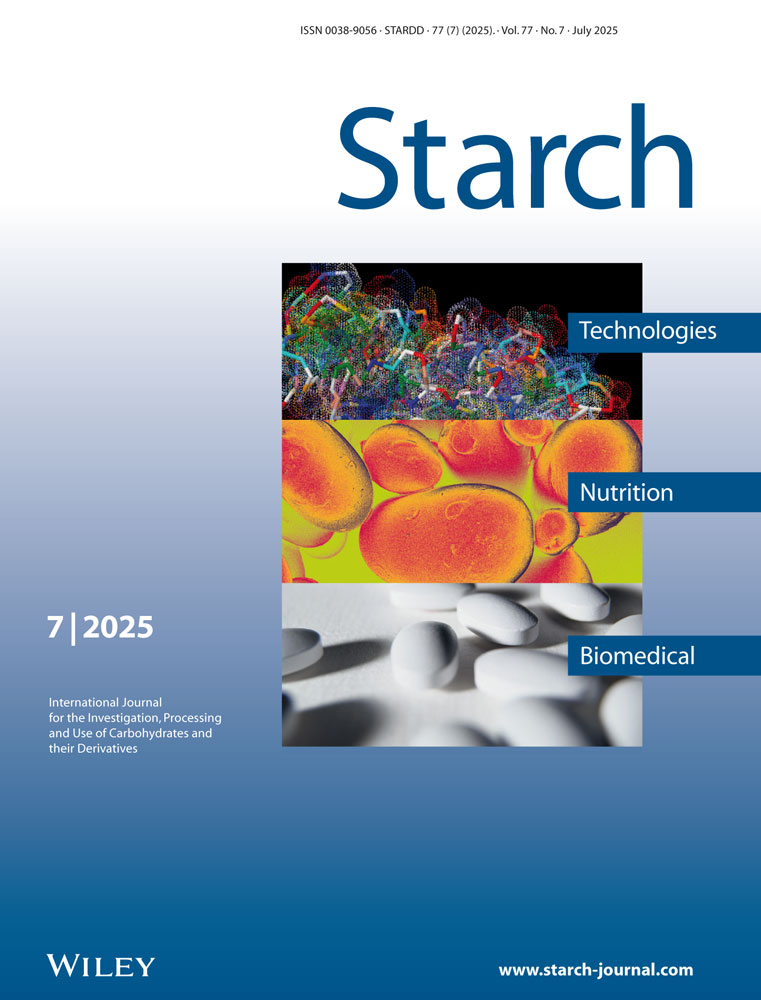Microscop of Rice Starch Granules During Cooking
Abstract
enStarch from five cultivars of rice was pasted in the Brabender viscograph and then held at 95°C for 60min. Granules were examined by light and scanning electron microscopy. In concentrated (12%) pastes, low-amylose rice starch showed total granule disintegration after 60min of cooking at 95°C, but highamylose granules showed only marginal disorganization. Waxy starch granules were disintegrated even at 70°C. In dilute (1%) pastes, on the other hand, granules swelled without appreciable disruption, apparently more in low than in high amylose starch. Clearly low amylose starch granules were weak and fragile and so swelled as well disintegrated easily, while high amylose rice starch was relatively strong and rigid and so resisted swelling as well as disintegration. This relative regidity/fragility of starch granules seemed to be the key to differences in rice quality.
Abstract
deMikroskopie von Reisstärkekörnern während des Kochens.
Stärke von fünf Reisaufwüchsen wurden im Brabender-Viskographen verkleistert und dann 60min bei 95°C gehalten. Die Körner wurden mittles Lichtmikroskopie und Raster-Elektronenmikroskopie geprüft. In konzentrierten Pasten (12%) zeigte Reisstärke mit niedrigem Amylosegehalt vollständige Korndesintegration nach 60minütigem Kochen bei 95°C, während amylosereiche Körner nur geringfügige Desorganisation zeigten. Wachsige Stärkekörner wurden bereits bei 70°C desintegriert. In verdünnten Pasten (1%) andererseits quollen die Körner ohne merkliche Zerreißung, offensichtlich eher in niedrig in amylosereicher Stärke. Offenbar waren Stärkekörner mit niedrigem Amylosegehalt weich und zerbrechlich und quollen und desintegrierten daher leicht, während amylosereiche Reisstärke fest und stark waren und daher sowohl Quellung als auch Desintegration widerstanden. Diese relative Festigkeit/Zerbrechlichkeit der Stärkekörner dürfte der Schlüssel sein zu den Unterschieden in der Reisqualität.




